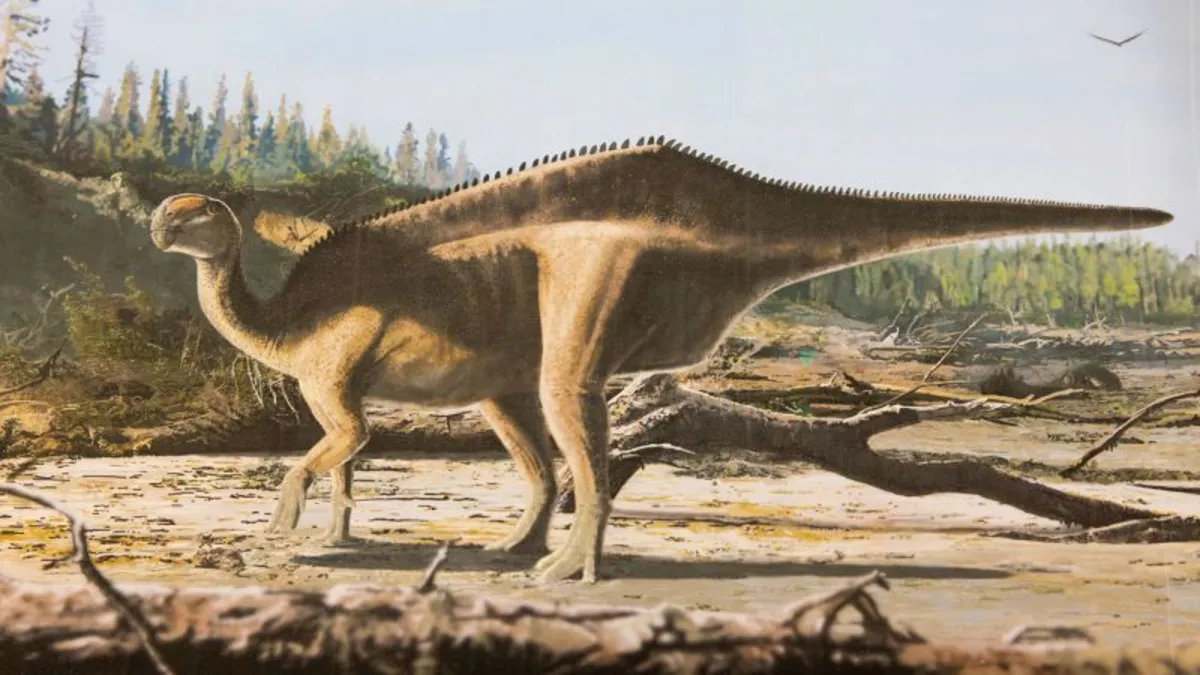
Paleontologists have made an exciting discovery with the identification of a new dinosaur species, Istiorachis macarthurae. This remarkable dinosaur is distinguished by its unique sail-like structure that runs along its back. The announcement was made by the Natural History Museum in London on Friday, shedding light on a fascinating chapter of prehistoric life.
The bones of Istiorachis macarthurae were discovered on the Isle of Wight, a small island located off the southern coast of England. This dinosaur roamed the Earth over 120 million years ago during the Early Cretaceous period, co-existing with other relatives of the Iguanodon, a well-known group of herbivorous dinosaurs that thrived from the Late Jurassic to the Early Cretaceous.
The species name macarthurae honors the record-breaking British sailor Ellen MacArthur, reflecting the connection between the natural world and human achievements. This discovery not only adds to our understanding of dinosaur diversity but also celebrates human influence on science and exploration.
Scientists are still investigating the purpose of the sail-like feature on Istiorachis macarthurae. One leading hypothesis suggests that this characteristic may have played a role in attracting mates and helping individuals recognize their species. The discovery was made possible when retired doctor Jeremy Lockwood re-examined the fossilized bones, initially thought to belong to one of the two known iguanodontian species from the Isle of Wight. Lockwood noted that the dinosaur exhibited particularly long neural spines, a feature that stood out and prompted further investigation.
Based on his findings, Lockwood has classified Istiorachis macarthurae as a new dinosaur species. This dinosaur stood approximately 2 meters (6.6 feet) tall and weighed around 1,000 kilograms (2,205 pounds). His research was published in the journal Papers in Palaeontology on Thursday, contributing significantly to our understanding of iguanodontian diversity.
Lockwood emphasized that the discovery of Istiorachis macarthurae highlights the evolutionary changes occurring among iguanodontians during the Early Cretaceous. He pointed out that these dinosaurs were transitioning from smaller, bipedal forms to larger, quadrupedal animals, necessitating stronger muscular support for their backbones. This evolutionary shift was reflected in the unusual structure of Istiorachis's spine.
One theory regarding the sail's function suggests it could have helped with body temperature regulation; however, Lockwood disputes this idea. He argues that a sail rich in blood vessels would be susceptible to damage and could lead to significant blood loss if injured. Instead, he proposes that the sail was likely a form of sexual signaling, akin to the elaborate tail of a male peacock, which serves to attract a mate.
Lockwood remains optimistic about future discoveries on the Isle of Wight, stating, “The discovery of another iguanodontian from the Isle of Wight shows that this was a very diverse area in the Early Cretaceous. I’m sure there’ll be more discoveries in the years to come.” This sentiment underscores the ongoing intrigue of paleontology and the potential for uncovering more secrets of our planet's distant past.